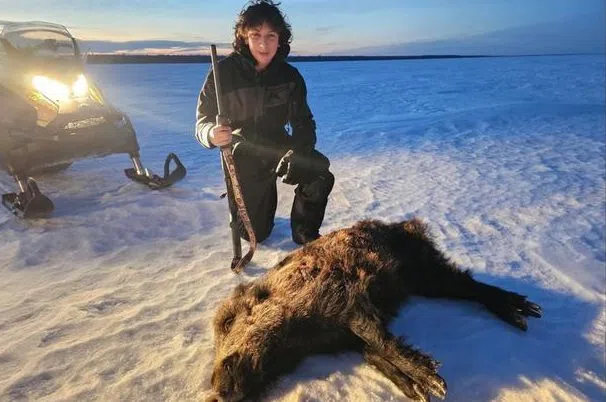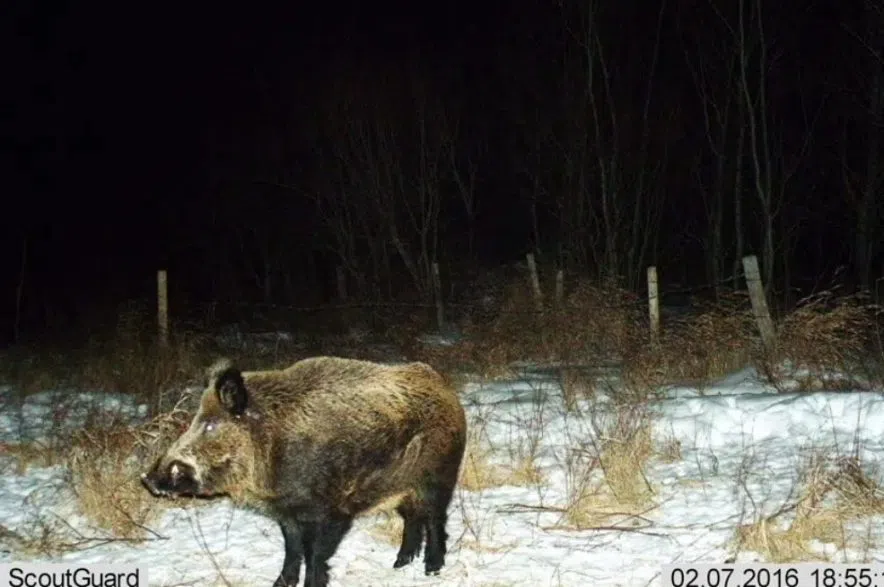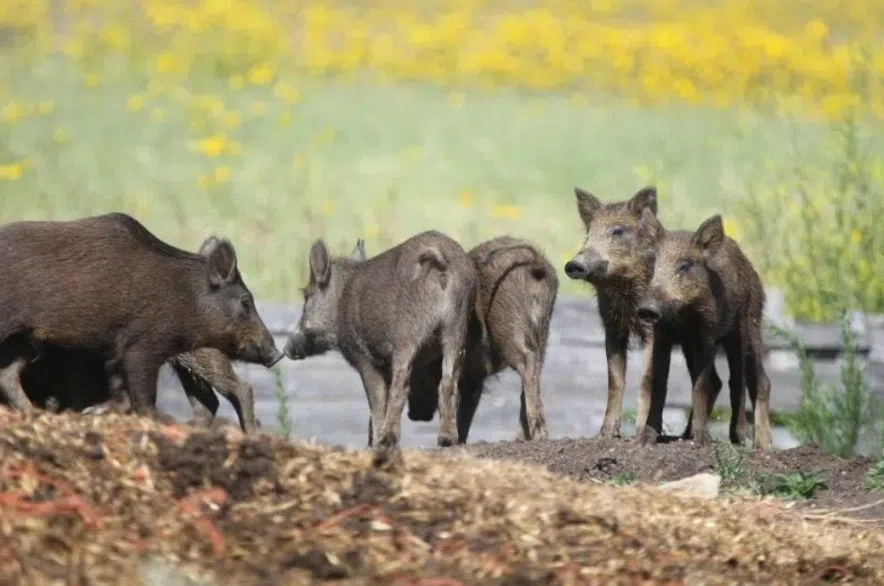While a report from Saskatchewan Crop Insurance Corporation (SCIC) said it is at the “forefront of eradicating wild pigs” in the province, a professor who studies the animals said his research shows wild swine populations are continuing to spread.
Dr. Ryan Brook, a professor at the University of Saskatchewan’s College of Agriculture and Bioresources, said the population distribution of wild pigs is larger now than its ever been before in the province.
Read more:
- Wildlife experts believe bear wandering into Regina a rare situation
- Wildlife rehabilitation centres in Regina, Saskatoon issue warning as bird flu spreads
“This idea of talking about eradication at this point, that’s a fairy tale,” he said. “That’s actually embarrassing and frustrating to hear people talk about eradication in Saskatchewan.”
In a report published on April 28 from the government’s crop insurance agency, it explained wild pig populations are concentrated in “two small areas of the province.” The report did not identify the areas.
“Even though wild pigs are known for their elusive behaviour, they are not the invincible super pigs many people believe,” read the report. “The animals leave identifiable signs making it possible to track and manage their populations effectively.”
Brook agreed there are two concentrated populations of the pigs, but said the animals are continuing to expand across the Prairies and into the boreal forest.
“We have real data about the distribution and spread of these pigs, and their range continues to get bigger and bigger every year,” he said.

Hunter Cohen Nelson stands next to the wild pig he shot at Montreal Lake in the winter. (Jarret Nelson/LaRonge Now)
In March, a wild pig was trapped and killed near Weyakwin, near Montreal Lake — which Brook said shows the populations are continuing to move north.
He said he would not be surprised to hear of any wild boar sightings south of La Ronge.
Wild pigs are an invasive species that can cause significant amounts of damage to farmers crops.
Issues first began when the animals were introduced to the Prairies from Europe in 1980s for their meat and hunting purposes.
The boars have been escaping from farms to mate since then, according to Brook.
Brook said the pigs reproduce quickly, spread disease, and can be difficult to find.
The SCIC report explained from 2017 to 2025 over 1,000 wild boars have been removed from the province through its Feral Wild Boar Control Program.
Brook questioned why the report does not indicate what the wild pig population was previously, and what it is now.
“Without data, this (report) means nothing to me,” he said. “There’s no substance — this is 100 per cent media spin.”
Dale Knouse, a manager with the SCIC, said the organization came to the conclusion it was approaching wild pig eradication after it saw decline in the number of wild pigs it was removing. To verify it, he said an aerial survey was conducted to confirm the numbers are down.
“We’ve done a lot of work over the last number of years to to reduce that that population and based on the survey that we conducted we’re even more confident now that we’re going to be able to eradicate that problem,” he said.

Wild pigs can often be difficult to track moving at night. (Klint Brownridge/Submitted)
The province uses trapping methods to capture entire groups of pigs — called sounders — so other pigs do not leave and expand the population.
Knouse said its a “misconception” there are many wild swine on the Saskatchewan’s landscape. He added that pig crop damage is easily identifiable because the animals will wallow and dig with their snout.
The SCIC said in the 2023-2024 fiscal year it paid over $26,000 in compensation for crop losses caused by wild boars, compared to the $24.4 million paid out for damage caused by other wildlife like deer and elk.
Knouse said the pigs do not typically stray from the two concentrated areas and called the pig killed in northern Saskatchewan “a rare occurrence.”
“There (is) the odd time there would be a lone animal that would travel somewhere and that’s what the unfortunate circumstance may have been here,” he said.
Brook said removing 1,000 pigs from the population was an achievement, but said approaching eradication at this point was not realistic.
“I feel nauseous even hearing those kinds of statements,” he said. “That is such a ridiculous mistruth, that I would say, shame on them.”
—with files from 650 CKOM’s Brent Bosker and larongeNOW
Editor’s Note: This story has been updated to correct the dates covered by the SCIC report.
Read more:











